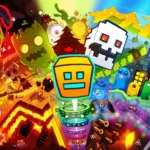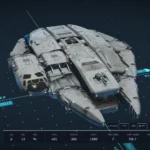Is Starfield Overhyped? Let’s Separate Fact from Fiction!
With the gaming world buzzing about the highly anticipated release of Starfield, it’s hard not to get caught up in the excitement. But amidst all the hype, it’s important to take a step back and ask ourselves: is Starfield truly deserving of all the attention it’s getting? In this blog post, we’ll delve into the reasons behind Starfield’s popularity, examine its gameplay to determine if it lives up to the hype, and explore whether or not the game’s universe structure and exploration opportunities are as promising as they seem. So, buckle up and join us as we embark on a journey to uncover the truth behind the Starfield hype!
Exploring Starfield’s Popularity
In the ever-evolving cosmos of gaming, Starfield shines brightly, securing a coveted position among the stars of Xbox’s most played games. The allure of this celestial adventure is undeniable, as it orbits at the third spot, outshined only by titans like Fortnite and Call of Duty. The feat is remarkable, given Starfield’s nature as a single-player odyssey, a genre which often struggles to maintain such high engagement in the wake of their initial release. It’s a clear indicator of Starfield’s magnetic pull on the gaming community.
Despite facing a meteor shower of criticism, Starfield’s gravitational pull keeps players in its orbit, highlighting its enduring appeal.
Yet, amid the applause, there are murmurs of discontent. The game’s roleplaying depth—a comet’s tail compared to the expansive universe of Skyrim and Oblivion—has been questioned. Critics argue that its gameplay, while expansive, mirrors familiar landscapes of previous Bethesda titles. This sentiment has fostered a divide, where some gamers assign Starfield a median score, deeming it unworthy of its full price ticket in terms of innovation and engagement.
| Game | Xbox Ranking | Player Engagement |
|---|---|---|
| Fortnite | 1 | High |
| Call of Duty | 2 | High |
| Starfield | 3 | High |
The interstellar journey of Starfield is a testament to the game’s out-of-this-world charm. Its success, while juxtaposed with critiques, showcases the complex orbit it maintains in the gaming universe—a balance of light and shadow that continues to intrigue and captivate players across the galaxy.
As we navigate through the cosmos of gaming trends, it’s evident that Starfield’s trajectory remains a topic of hot debate. Its popularity is a phenomenon that, despite its imperfections, has managed to keep a steady course in the hearts of spacefarers and adventurers alike.
Exploration Opportunities in Starfield
The allure of the unknown beckons players in Starfield, where the vast cosmos unfolds with a staggering array of over 1,000 planets to discover. This grand tapestry of celestial bodies ranges from the stark beauty of desolate, icy worlds laden with precious materials to the verdant splendor of habitable zones where life thrives in abundance. The promise of uncharted territories and untold stories fuels the spirit of adventure, ensuring that the call to explore resonates deeply with the interstellar voyagers.
Each planet orbits within its unique ecosystem, promising a kaleidoscope of environments to brave. These settings are not just visual backdrops; they are playgrounds ripe with resources, teeming with exotic flora and fauna, and punctuated by relics of ancient civilizations. The thrill of setting foot on an untouched world, scanning the horizon for signs of life or resources, is an experience that Starfield delivers in multitudes, catering to the explorers at heart.
Starfield’s Universe Structure
The architecture of Starfield‘s universe is a marvel in itself. Beyond the individual planets, players can chart courses across over 100 star systems that constitute the game’s expansive galaxy. Each system is a gateway to new discoveries, harboring its own secrets and challenges. The intricate web of celestial phenomena, from asteroid fields to space anomalies, adds layers of depth to the exploratory experience. This cosmic sandbox is a testament to the game’s ambition, offering a universe that is not only vast but filled with dynamic elements that can surprise even the most seasoned spacefarers.
With such an elaborate universe structure, Starfield weaves a complex narrative where player choices and discoveries intertwine with the overarching story. This interstellar odyssey is as much about the journey as it is about the destination, and the game’s universe serves as a canvas for players to script their own epic.
As adventurers traverse this meticulously crafted cosmos, they will encounter not just static worlds, but evolving environments that react and change, further immersing players in the reality of their space saga. Whether it’s a sudden meteor shower or the shifting politics of alien factions, the universe of Starfield is alive and brimming with potential narratives.
In conclusion, the game’s promise of discovery and the sheer scale of its universe are undeniable, but it is the individual stories of exploration and conquest that will determine if Starfield lives up to the excitement it has generated. As players venture forth into the great expanse, they will find that the game’s true magic lies in the freedom to carve out their own path among the stars.
FAQ
Q: Is Starfield overhyped?
A: Based on its performance and player engagement, Starfield does not seem to be overhyped. It remains the third most played game on Xbox, even a month after its launch.
Q: Has Starfield flopped?
A: No, Starfield has not flopped. It continues to perform well and remains popular among players, being the third most played game on Xbox.
Q: What are the main criticisms of Starfield?
A: The main criticisms of Starfield include lackluster exploration and a perceived lack of depth. Some players find the game dull and tedious.
Q: Does Starfield have a clear endpoint?
A: Yes, Starfield is a single-player game with a clear endpoint. However, it does offer New Game Plus loops for additional gameplay.







